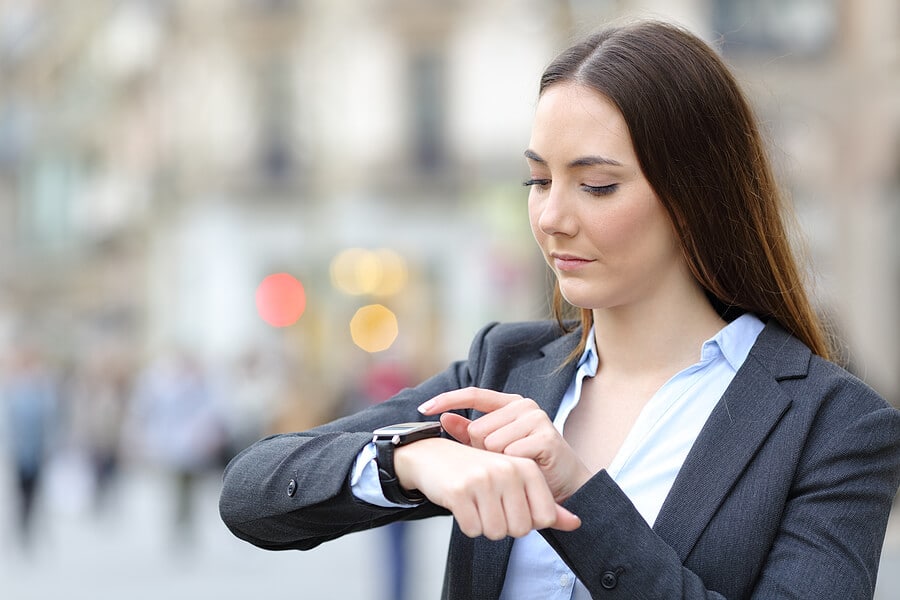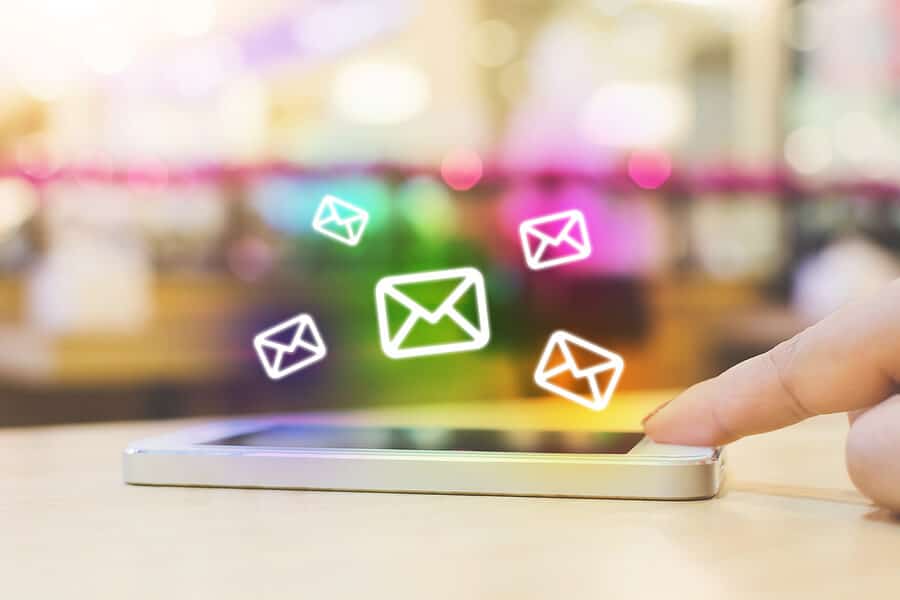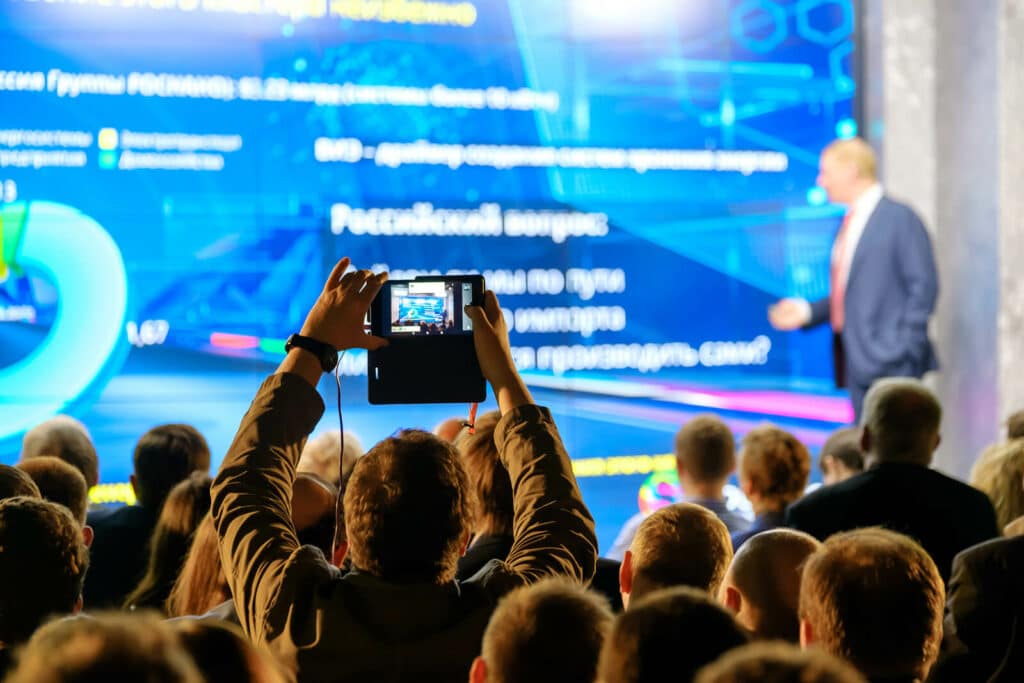Deployed by Apple in 2013 as iBeacon, beacon technology was adopted first in retail marketing and soon after in the events industry. For events, beacons are a dual-purpose technology, with the ability to both track attendee activity and improve the attendee experience.
What is it? Beacon technology is a form of proximity marketing in which marketing messages can be sent to people based on their location. In retail marketing, many big brands use this technology to send customers personalized offers when they shop in-store. At live events, beacons have a wide range of potential uses. They can:
- Be marketing tools
- Track attendee movements
- Boost engagement
- Enable contactless interactions
How Does Beacon Technology Work?
Beacons are typically powered via Bluetooth or near-field communications (NFC). Both methods work independently of wi-fi, but in different ways, and with different applications. Most Android and Apple phones ship with both Bluetooth and NFC support. Events can use either or both types of beacon and reach most attendees.
1. Bluetooth Beacons
Bluetooth beacons work by relaying a signal that can be picked up by Bluetooth-enabled devices. Signals are typically received as push notifications on a guest’s phone or mobile device. They can be integrated into an event app but don’t have to be associated with an app in order to work.
Because it works via Bluetooth, this form of beacon technology does contribute to power usage on a mobile device. However, it uses Bluetooth Low Energy (BLE), which consumes much less power than Bluetooth Classic. The tradeoff is that BLE has a lower range of operation than Bluetooth Classic and transmits data at a slower rate. Still, beacon technology requires only small amounts of data exchange and has a 30- to 50-meter range indoors. So even with those limitations, it’s a useful form of proximity marketing.
The main disadvantage is that your guests must have Bluetooth-enabled devices. In addition, their devices must be turned on, and BLE must be enabled. These days, most smartphones, mobile devices, and computers are Bluetooth-ready and support BLE, but the default Bluetooth mode is typically the classic version. If you use BLE beacons, it’s important to remind attendees to enable BLE on their mobile devices.
The advantage of this system is that once it’s enabled, the user doesn’t need to perform any other actions. Provided their mobile device has plenty of battery life, their BLE will remain active for the duration of the event.
2. Near-Field Communication
Rather than using Bluetooth technology, near-field communication (NFC) relies on inductive coupling to exchange information. When two complementary NFC devices are within range, they create an electromagnetic field. This produces enough energy to power a brief exchange of data between the two devices. NFC-enabled items can be loaded with software that lets them perform tasks such as relaying location, exchanging information, or making payments.
The main drawback of NFC in comparison to Bluetooth for beacon technology is range. The maximum range of NFC is around 8 inches, but the optimal range is about 1.5 inches. This means the user has to hold their NFC-enabled card or wearable near another NFC item for a few seconds to complete a transaction. However, given that this technology can be used to power contactless payments, the lack of range is also a feature that can be considered a security enhancement, as it prevents accidental transactions.
Most mobile devices are NFC-enabled. Credit cards and debit cards can also have this functionality. And it’s possible to issue event attendees with NFC-enabled tickets or wearable items they can use throughout an event.

How to Use Beacon Technology to Enhance the Event Experience
Beacon technology isn’t something you should use just because it’s there. Don’t make the mistake of sending out notifications without regard to location and context. Incorrectly used, beacons are an annoyance because those notifications take people’s attention without providing anything in return. If attendees get notifications that aren’t directly related to where they are, those notifications are pointless. And if they get too many pointless pop-ups, they’ll stop paying attention.
Instead, each beacon needs to be carefully considered, both in terms of location and context. When people pass by a particular beacon, what are they likely to be doing? And what would they most want to hear about?
Consider sponsorship booths, for instance. If one of your key objectives for an event is to drive traffic to a sponsor booth, beacons can definitely help. But it’s not helpful to send out event-wide messages to “Visit our sponsors!” People who are nowhere near the sponsorship booth can’t act on that notification right away, so it would be most useful to attendees who are near the booth.
If you approach beacons in this way, you create a network of location-appropriate messages that are useful because they’re location-appropriate. This helps you ensure that the messages people receive are relevant and actionable.
Beacons for Navigation
One of the most basic uses of beacons is for indoor navigation. GPS isn’t reliable indoors, but beacons are perfect for the role. They’re especially useful for navigation within an event app, as attendees can see their exact location within an event space. They can use the app to find their way to a specific location or just figure out where in the venue they currently are.
Contactless Ticketing and Payments
By employing NFC, an event can go completely cashless and make all ticket-based transactions contactless too. One way to do this is with a ticket that also functions as an NFC device—either a card or a wearable item such as a wristband. Attendees can check in via the event app to trigger a specialized printer to print their NFC wearable or card. They can use their NFC ticket in a variety of ways, depending on if and how the NFC is integrated within your event app.
Some options include:
- NFC readers can be deployed at check-in points for sessions and speakers. Attendees check in by holding their badge to the reader for a few seconds.
- Using NFC check-in also provides a real-time headcount for each session, making it easy to see when rooms are full.
- Items can be loaded with the attendee’s contact details. Instead of exchanging business cards, they can use the NFC device to exchange information with others. They can retrieve the stored information later via the event app.
- The NFC can have an additional function as an event wallet. Attendees can load their event wallet with money and use it to make contactless purchases from event vendors. This means there’s no need to handle money or enter a PIN into a card reader.
Push Notifications to Provide Valuable Information
Bluetooth beacons can be used to send event attendees location-specific information. Some options for using beacons in this way include:
- Greeting attendees when they arrive at your event with an invitation to check in
- Sending a welcome message after check-in, reminding attendees to enable the event app
- Sending menu or food-vendor information when an attendee enters the dining area
- Inviting attendees to visit sponsorship booths when they’re in proximity
- Placing a beacon at the entrance to each session room for contactless check-in
- Using beacons to remind attendees to complete post-session surveys after each session
- Launching a product demo video or sales information for exhibitors when attendees enter their booths
Beacons to Personalize the Event Experience
Beacons can be personalized too. One way to do this is to ask attendees to fill out a quick survey, during registration or in the event app. This should be tailored to provide some insight into specific areas of interest.
With this information, you can then tailor beacons to trigger based on each person’s profile. For instance, attendees might get invitations to visit booths as they walk by, depending on their interest profile.
Another option is to create “matchmaking” opportunities by matching attendees with others based on complementary profile information. Attendees then receive a notification when they walk by an exhibitor or sponsor booth that might be of interest to them.
Attendees can also receive content suggestions based on their own tracked activity. For instance, people who attend a particular session may be invited to other sessions or booths that offer related content.
Gamification to Enhance Attendee Engagement
Beacons are the perfect technology to pair with an event app or use as a standalone option for driving gamification. Some ways to use beacons with gamification elements include:
- Beacons can trigger an automatic check-in for a location-based scavenger hunt that encourages attendees to explore the event space.
- Prompt attendees to take a selfie or photo for an item-based scavenger hunt.
- Send survey or quiz questions at targeted locations.
Beacon Technology Helps Event Organizers
Using beacons at an event can vastly improve the event experience for attendees. But it can improve the event for organizers too. While beacons are quietly improving the event for attendees, every push notification, check-in, and transaction also provides data on how people behave at the event. Beacon technology provides you with hard data on how attendee traffic ebbs and flows as the event progresses. It tells you what the most popular sessions are, for how long people attended those sessions, and whether they left early. It can help you determine the most successful sponsor booth and exhibit locations. In short, it can provide you with a wealth of information that you can use to make future events even better.
Beacon Technology Can Take Your Event to the Next Level
Beacon technology has huge potential to improve the event experience, and not just for attendees. This tech can also improve traffic for sponsors and exhibitors and can even provide valuable data for event organizers. But remember: Beacon technology should add real value for attendees. With this strategy, you’ll enhance your event, increase app usage, and improve attendee engagement all at the same time.









